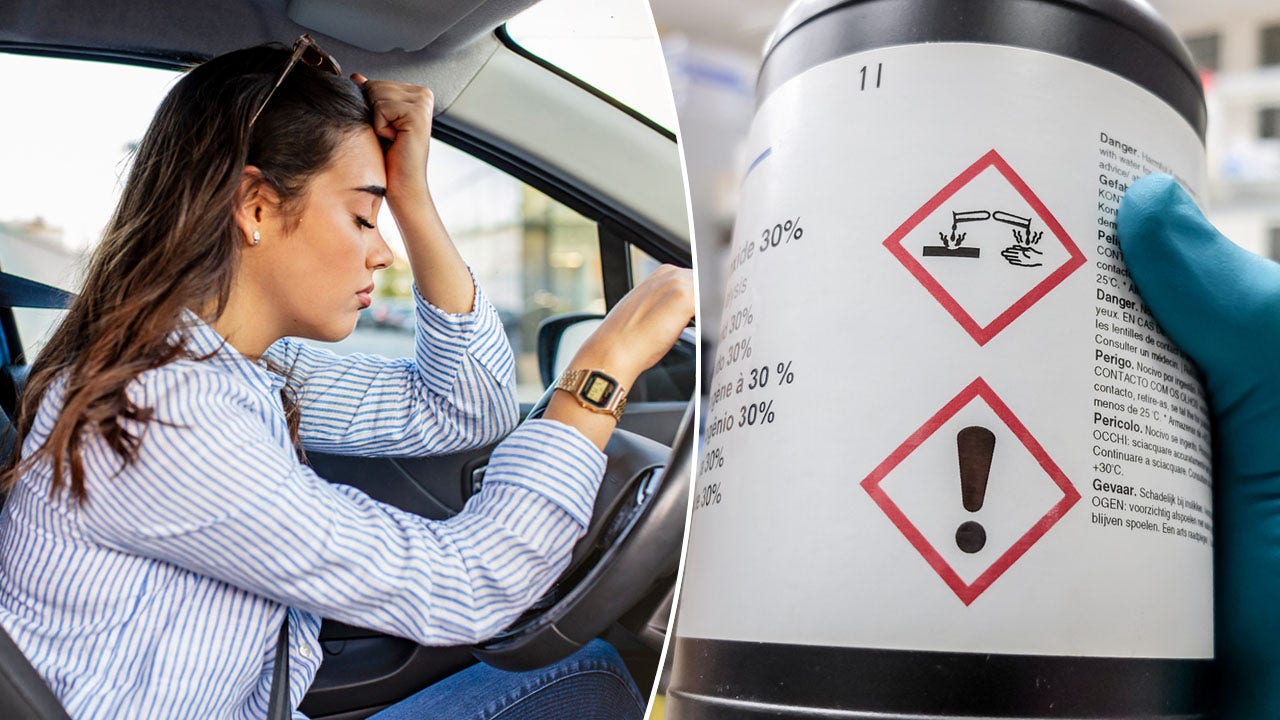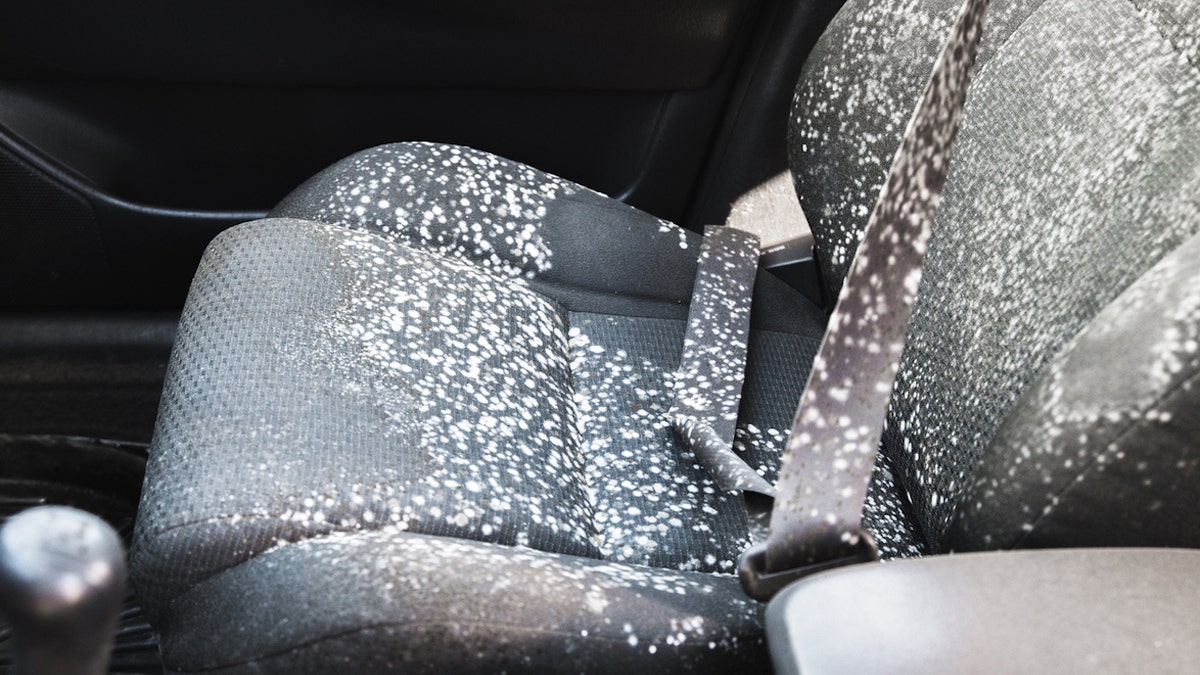Health
Cat owners could be at higher risk of schizophrenia, study suggests, but more research needed

Cuddling with a cat or kitten might seem therapeutic, but a new study suggests contact with these animals could have adverse mental health effects down the road.
Research published in Schizophrenia Bulletin found that people who are exposed to cats may have more than double the chances of developing schizophrenia and other similar mental disorders later in life.
Australian researchers from the University of Queensland conducted a systematic review of 17 studies performed in 11 countries between Jan. 1, 1980, and May 30, 2023.
STUDY LINKS CANNABIS ABUSE TO SCHIZOPHRENIA IN YOUNG MEN
The study data was pulled from several databases, including Medline, Embase, CINAHL, Web of Science and other publications.
All the studies focused on participants who owned cats in their first 25 years of life and experienced schizophrenia-related outcomes, according to the researchers.
A new study suggests that being exposed to cats early in life could have adverse mental health effects down the road. (iStock)
Schizophrenia is a mental illness that affects a person’s thoughts, behaviors and feelings, as defined by the National Institute of Mental Health.
Psychotic symptoms can include hallucinations, delusions and thought disorders.
AI-DISCOVERED DRUG SHOWS ‘ENORMOUS POTENTIAL’ TO TREAT SCHIZOPHRENIA: ‘REAL NEED FOR BETTER TREATMENT’
Those with the disorder may also experience cognitive challenges, loss of motivation, withdrawal from social activities, difficulty showing emotions and an overall lack of functioning.
“Based on past studies, there is evidence linking cat ownership and an increased risk of subsequent schizophrenia,” study author Dr. John McGrath, a psychiatrist at Queensland Brain Institute at the University of Queensland, St Lucia, Australia, told Fox News Digital.
“We had an open mind, and we reported the published findings.”

Research published in Schizophrenia Bulletin found that people who own cats may have more than double the chance of developing schizophrenia and other similar mental disorders later in life. (iStock)
Previous research linking cat exposure to schizophrenia risk has focused on Toxoplasma gondii (T. gondii), a parasite that can cause a feline disease called toxoplasmosis.
Separate studies have identified a “modest to large association” between toxoplasmosis and schizophrenia.
CATS AT COLLEGE? ‘HIGHLY EMOTIONAL’ STUDENTS MAY BENEFIT FROM FELINES ON CAMPUS: STUDY
The study did have some limitations, McGrath acknowledged.
“While observational epidemiology cannot prove this link, this topic warrants further, more detailed research,” he said.
“I was disappointed that there were not more highly quality — i.e., more rigorous — studies in our review.”
“Schizophrenia is an incredibly complex disorder, and this study identifies one potential risk factor that needs to be understood in a broader context.”
Schizophrenia is a “poorly understood group of disorders,” McGrath noted.
“We need to invest in more research that looks at potential risk factors. There is much work to be done.”
‘No need to panic’
Dr. Zachary Ginder, a psychological consultant and doctor of clinical psychology at Pine Siskin Consulting, LLC in Riverside, California, was not involved in the study but commented on the findings.

Schizophrenia is a mental illness that affects a person’s thoughts, behaviors and feelings. Psychotic symptoms can include hallucinations, delusions and thought disorders. (iStock)
“It is important to keep a level head in consideration of these findings, and there is no need to panic if you own a cat and have children or are thinking about starting a family,” Ginder told Fox News Digital.
“Schizophrenia is an incredibly complex disorder, and this study identifies one potential risk factor that needs to be understood in a broader context. It would likely be premature to make strong recommendations about cat ownership solely based on these findings.”
CLICK HERE TO SIGN UP FOR OUR HEALTH NEWSLETTER
Although a relationship has been established between early-life cat exposure and schizophrenia, Ginder emphasized that this does not necessarily indicate that exposure causes the disorder.

“A lot more research” is needed to better understand these relationships — “accounting for a myriad of potential confounding factors and exploring underlying biological mechanisms,” said one psychological consultant and doctor of clinical psychology. (iStock)
“There is a lot that we still don’t know, and it is important to highlight that not all people who are exposed to cats or infected with the parasite develop mental health issues, and not all people with schizophrenia have had cat exposure,” he told Fox News Digital.
“While this parasite may play a role, it’s likely part of a complex interplay of genetic and environmental factors.”
Ginder echoed the researchers’ comments that “a lot more research” is needed to better understand these relationships — “accounting for a myriad of potential confounding factors and exploring underlying biological mechanisms.”
“These findings just give us another piece of an incredibly complex puzzle.”
For more Health articles, visit www.foxnews.com/health.

Health
Introducing Our Product Reviews Team, and How We Review | Woman's World

Sign Up
Create a free account to access exclusive content, play games, solve puzzles, test your pop-culture knowledge and receive special offers.
Already have an account? Login
Forgot your password?
Get back to the Sign In
Use left and right arrow keys to navigate between menu items.
Use escape to exit the menu.
Health
What You Should Know About the Military Diet: Experts Weigh In | Woman's World

Sign Up
Create a free account to access exclusive content, play games, solve puzzles, test your pop-culture knowledge and receive special offers.
Already have an account? Login
Forgot your password?
Get back to the Sign In
Use left and right arrow keys to navigate between menu items.
Use escape to exit the menu.
Health
Could your car make you sick? Study highlights potentially cancerous toxins in vehicles

Americans may be breathing in cancer-causing chemicals while driving, recent research suggests.
A study published in the journal Environmental Science & Technology has sparked discussions about the potentially harmful toxins that could be lurking in the cabins of vehicles.
“Certainly the indoor air quality can cause health symptoms,” Dr. Ken Speath, M.D., the division chief and medical director for occupational and environmental medicine at Northwell Health on Long Island, New York, told Fox News Digital.
‘FOREVER CHEMICALS’ FOUND IN US DRINKING WATER, MAP SHOWS ‘HOT SPOTS’ OF HIGHEST LEVELS
It is important to be mindful of what you’re breathing in at home, at the office, at school and even in cars, according to Speath, who was not involved in the study.
“There can be situations where levels of harmful chemicals get high enough to potentially cause health harms,” he said.
Americans may be breathing in cancer-causing chemicals while they are driving, recent research suggests. A study published in the journal Environmental Science & Technology has sparked many discussions. (iStock)
“A car is a closed small space — so whatever is in the air is certainly going to be breathed in.”
Research reveals ‘harmful chemicals’
The peer-reviewed study looked at 101 owned vehicles in the U.S., model year 2015 or newer.
The researchers concluded that harmful flame-retardant chemicals — including those suspected of potentially causing cancer and some neurological issues — may be polluting the air inside vehicles.
DRIVING DANGERS: 9 TOP DISTRACTIONS THAT CONTRIBUTE TO ACCIDENTS, ACCORDING TO EXPERTS
“Flame retardant chemicals, which are intentionally added to vehicle interiors to meet flammability standards, are released into the cabin air from the materials to which they were applied,” lead author Rebecca Hoehn, a scientist at Duke University, told Fox News Digital.
“People in these vehicles may be exposed to these chemicals.”
Seat foam was the only material the researchers measured, Hoehn said, but other interior materials could also contain the chemicals.

The researchers concluded that harmful flame-retardant chemicals — including those suspected of potentially causing cancer and some neurological issues — may be polluting the air inside vehicles. (iStock)
“Considering the average driver spends about an hour in the car every day, this is a significant public health issue,” Hoehn warned.
“It’s particularly concerning for drivers with longer commutes, as well as child passengers, who breathe more air pound for pound than adults.”
The chemicals detected in the car cabins included a flame retardant called tris (1-chloro-isopropyl) phosphate (TCIPP), which is currently being investigated as a potential carcinogen by the U.S. National Toxicology Program.
“Considering the average driver spends about an hour in the car every day, this is a significant public health issue.”
Other flame retardants — tris (1, 3-dichloro-2-propyl) phosphate (TDCIPP) and tris (2-chloroethyl) phosphate (TCEP) — were also detected.
These are “two Californian Proposition 65 carcinogens linked to neurological and reproductive harms,” according to a press release.
Higher concentrations of the flame retardants were found during warmer weather.
“We found that the same cars, sampled in both winter and summer, had higher concentrations of flame retardants in the cabin air during the warm summer months,” Hoehn told Fox News Digital.

Flame retardants are added to vehicles to meet the National Highway Traffic Safety Administration Federal Motor Vehicle Safety Standard, which mandated their use in the 1970s. (iStock)
Flame retardants are added to vehicles to meet the National Highway Traffic Safety Administration Federal Motor Vehicle Safety Standard (FMVSS 302), which mandated their use in the 1970s, the release stated.
Flame retardants have been the “focus of concern for some time,” Speath told Fox News Digital.
More information is needed to determine the health risks these chemicals pose in humans, he said.
THESE MEDICATIONS COULD MAKE DRIVING DANGEROUS, THE FDA WARNS
“A number of these have been demonstrated in studies to have health harms in animals,” he said.
“That doesn’t necessarily mean that would be true for humans, but it raises that possibility, so we need to study these chemicals more in relation to their effects on humans.”

Higher concentrations of the flame retardants were found during warmer weather, the researchers said. (iStock)
Emanuela Taioli, M.D., PhD, the director of the Institute for Translational Epidemiology at Icahn School of Medicine at Mount Sinai in New York City, was also not part of the study, but shared her reactions.
“This is a very relevant finding, since it may prompt changes in cars’ upholstery, as well as in other parts of the car where there is foam,” she told Fox News Digital via email.
“We also want to know more about this finding and monitor whether it is replicated by other investigators.”
Other sources of toxins
Stephen Showalter, a home inspector and indoor environmental air consultant with Showalter Property Consultants in Maryland, said he typically interviews clients about their history of illness, then tests for potential sources of sickness in buildings, cars, RVs and boats.
Mold is a common culprit when it comes to health issues triggered by one’s environment, he said in an interview with Fox News Digital.
TOXIC CHEMICAL POISONING: HAVE YOU BEEN AFFECTED? HOW TO KNOW
Dr. Daniel Johns, a member of the International Society of Environmentally Acquired Illnesses and a chiropractor who practices in Annapolis, Maryland, echoed Showalter’s concerns about mold-related health issues.
Johns also cautioned that cars can be a daily source of mold exposure.
“Any water that leaks from a window, sunroof or convertible can get into the carpet and cause mold growth,” he said during an interview with Fox News Digital.

Mold is a common culprit when it comes to health issues triggered by one’s environment, according to an environmental expert. (iStock)
“Mold can start growing on a wet surface within 24 to 48 hours.”
For families with small children, spilled sippy cups could play a role when it comes to mold in cars, Johns warned.
“The water seeps into the upholstery and doesn’t get noticed or properly dried out, and the whole seat can become moldy,” he said.
“Mold can start growing on a wet surface within 24 to 48 hours.”
“Every time you sit on the seat, it releases a mold spore cloud into the car. Once that happens, you can’t clean it away. The upholstery must be removed and replaced.”
The impact of these potentially harmful pollutants can vary from one person to the next, experts told Fox News Digital.

For families with small children, spilled sippy cups could play a role when it comes to mold in cars, an expert warned. (Kids and Car Safety)
People metabolize chemicals and toxins in different ways, according to Taioli.
“Metabolism happens through enzymes that the body produces,” he said.
“Each of us has a different genetic profile that defines our metabolic capacity. As a consequence, the same amount of toxin may be metabolized better/faster by some, and worse/slower by others.”
Tips for ensuring safe interiors
While further research on car-borne chemicals is needed, experts say people can take measures to limit exposure.
“People may be able to reduce their exposure by ventilating their cars,” Hoehn advised.
“For example, rolling down the windows to let out contaminated air, or pulling in fresh air with climate control systems, should reduce concentrations.
“Ultimately, reducing the amount of flame retardants added to vehicles in the first place would provide the greatest reduction in exposure risk.”
Controlling your vehicle’s cabin temperature may also reduce exposure, she added.
“Parking in a garage or shade instead of full sun may reduce the cabin temperature and limit the extent of flame retardant release,” Hoehn said.
The researchers also called for action from regulatory agencies and vehicle manufacturers.
CLICK HERE TO SIGN UP FOR OUR HEALTH NEWSLETTER
“Ultimately, reducing the amount of flame retardants added to vehicles in the first place would provide the greatest reduction in exposure risk,” Hoehn noted.
“If flammability standards for vehicles could be revised to meet fire safety guidelines without the use of added flame retardants, risk of flame retardant exposure from personal vehicles could be greatly reduced.”

To prevent mold in a vehicle, experts recommend keeping your windows up when it rains or snows to prevent water from permeating the carpet or fabric. (iStock)
Having your car’s air quality and surfaces tested is one way to reduce the risk of exposure to allergens, toxins and chemicals, experts told Fox News Digital.
To prevent mold in a vehicle, Showalter recommends keeping your windows up when it rains or snows to prevent water from permeating the carpet or fabric.
He also cautioned about leaky air conditioners, which can foster mold growth in vehicles, and about leaving wet items in the car.
Lastly, before buying a used car, he said it is important to check the vehicle’s history to make sure it doesn’t have flood damage, which can lead to mold and other issues.
If you think you are experiencing illness due to chemical exposure in your car, home or office, it’s best to see a health care professional to discuss your symptoms.
Fox News Digital reached out to several major car companies for comment.
For more Health articles, visit www.foxnews.com/health.
-

 Politics1 week ago
Politics1 week agoOhio AG defends letter warning 'woke' masked anti-Israel protesters they face prison time: 'We have a society'
-

 Finance1 week ago
Finance1 week agoSpring Finance Forum 2024: CRE Financiers Eye Signs of Recovery
-

 Politics1 week ago
Politics1 week agoBiden’s decision to pull Israel weapons shipment kept quiet until after Holocaust remembrance address: report
-

 World7 days ago
World7 days agoIndia Lok Sabha election 2024 Phase 4: Who votes and what’s at stake?
-

 News1 week ago
News1 week agoThe Major Supreme Court Cases of 2024
-

 News1 week ago
News1 week agoTornadoes tear through the southeastern U.S. as storms leave 3 dead
-

 World1 week ago
World1 week agoA look at Chinese investment within Hungary
-

 Politics1 week ago
Politics1 week agoTales from the trail: The blue states Trump eyes to turn red in November


/cdn.vox-cdn.com/uploads/chorus_asset/file/25454513/New_Shepard_launch.jpg)











